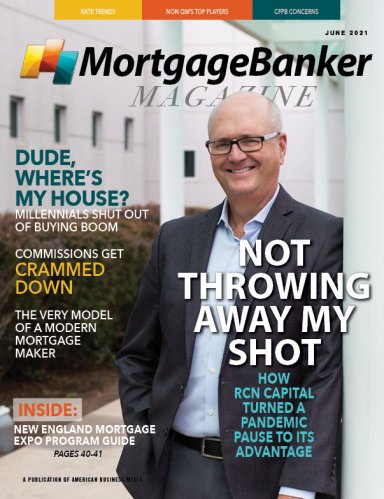Data-as-a-Service (DaaS) companies are making it easy for lenders to tap into new data sets; yet, not all data is created equally. Leveraging behavioral data sets widens the view of the consumer, helping lenders deliver better customer experiences and increase their marketing performance. Multiple technologies can cloud that picture. It’s important to find a true partner in your DaaS provider. One works with you on your outreach strategies, and one who uses data and intelligence to connect to known consumer wants, desires, and needs based on actual consumer behavior. We know this formula drives better engagement and higher acquisition, growth, and retention. It’s just more relevant as we look at the digital evolution.
Mortgage Banker: How has leveraging data evolved in the last few years?
Mike Eshelman: Initially, a client would monitor a consumer list, someone who they care about, and we would just signal yes or no. Did we witness them in-market for a mortgage? We took it to the next level as we understood the data of which we had access. We built algorithms to understand how consumers were interacting with comparison shopping sites.
We were able to identify if they were in-market, and what they were in market for. For example, we could identify a refinance versus home purchase journey, which enabled marketers to send the right type of engagement, which could be, "Hey, if you're in-market for a mortgage, we'd like to help you.” Or more focused messages like, "Thinking about a refinance? We can help you with that,” or "Are you looking for a new home?" This approach allowed them to target the messaging in an accurate way that's appreciated by the consumer.
Today, we’re able to identify the level of intent, the time of day the consumer typically shops, how frequently they shop, and their specific journey. This evolution in consumer behavior identification and classification allows for our clients to understand the day of week or time of day. From there they can determine when is the best time to get in front of this consumer, and when is it likely that they have time to have a conversation or research. As a result, we're seeing an increase in answer rates, email engagement rates, and display ad engagements because they’re being delivered at the most appropriate time.
One other distinction is that there's consumer generated data and then there's machine learning generated data. It’s important to understand micro data sets about a consumer, their behaviors, and have algorithms or machines determine the best next engagement. As an example, I know of clients who are not only modeling who to market, based on a lot of data, but modeling their loan officer staff as well. This helps them match the loan officer to the consumer for optimal conversion rates, which is relatively new. I've only heard of that really coming about in the last few years. Let’s say you know a consumer is a veteran and you have a loan officer who is also a veteran. You want to match those two up, because there's going to be an instant bond. Then you'll see conversion rates tick up.
Now take that a million times deeper with leveraging big data to understand personality match, etc. between consumers and loan officers, which now has gained traction over the last couple of years. And I would classify that under that 90 percent as well.
Mortgage Banker: How can mortgage lenders harmoniously implement different technologies to create an effective retention strategy and improve customer experience?
Mike Eshelman: There are different datasets and different technologies that are purpose-built for mortgages. This typically means they're not purpose-built for the marketing function, which usually controls the customer experience. So, we typically see lenders who have multiple platforms that are stitched together. And if some data lives in one platform and other data lives in another platform, it can be fragmented in trying to create a good customer experience.
Those that I see having the most success may have multiple platforms that they're stitching together, but they have one platform that's considered the source of truth about a customer, which is something I feel is key. It's using this source of truth to build and deploy the journey mapping of the customer experience and creating a seamless campaign.
I wish my mortgage servicer were a client of mine. I receive about four emails a week that communicate, "Are you interested in refinance? Rates are low. Are you thinking about selling your house? Get pre-approved for your next home. Are you thinking about moving? Do you need cash out?" The message is so back and forth crazy, it's a buckshot. Just casting a wide net to see what hits.
But if they were to understand more about when the right time is to market to me, I would be more open to moving forward with them should I be in-market for something. But I'm so disappointed in how they just blast email me all the time. I don't want to do business with them.











